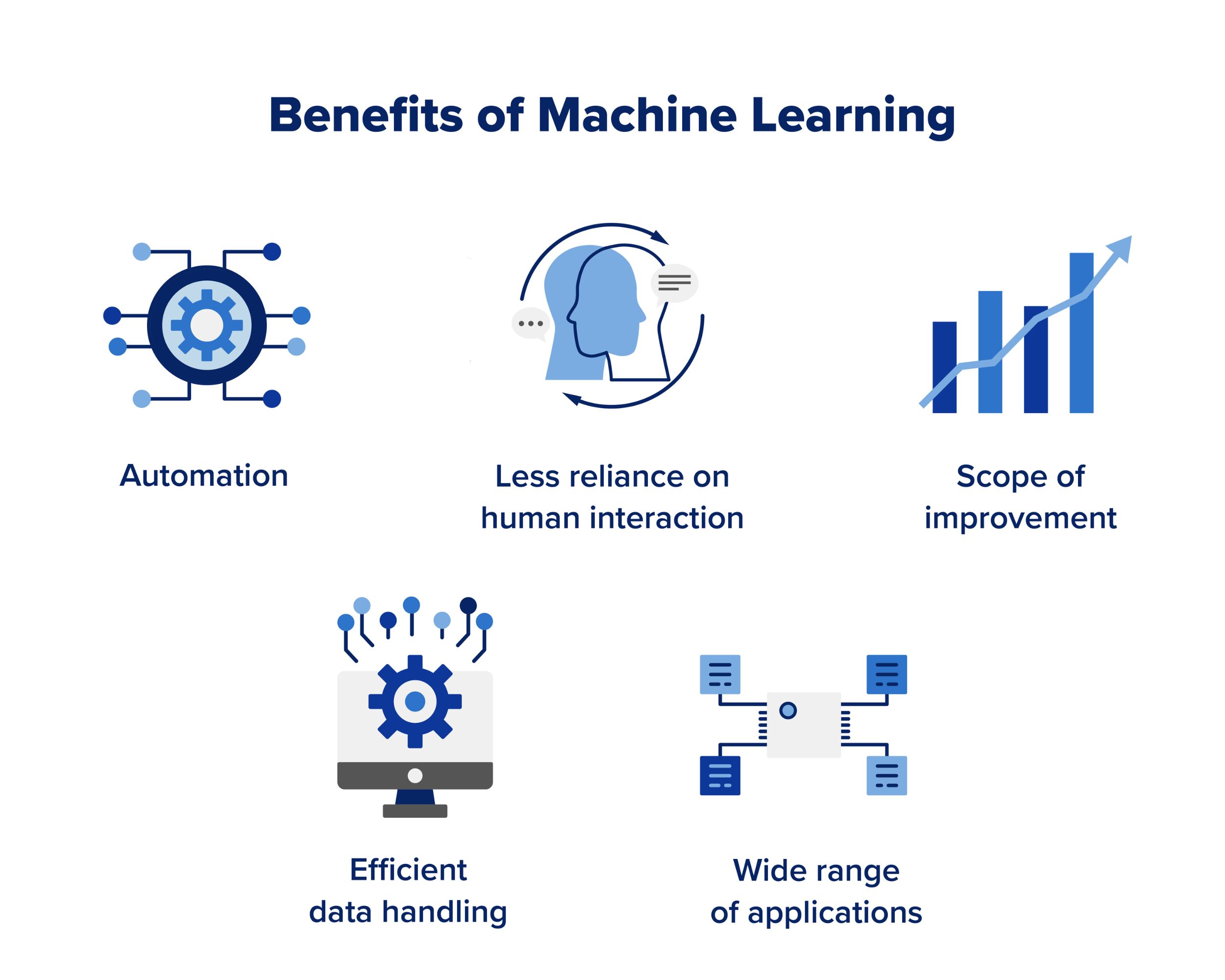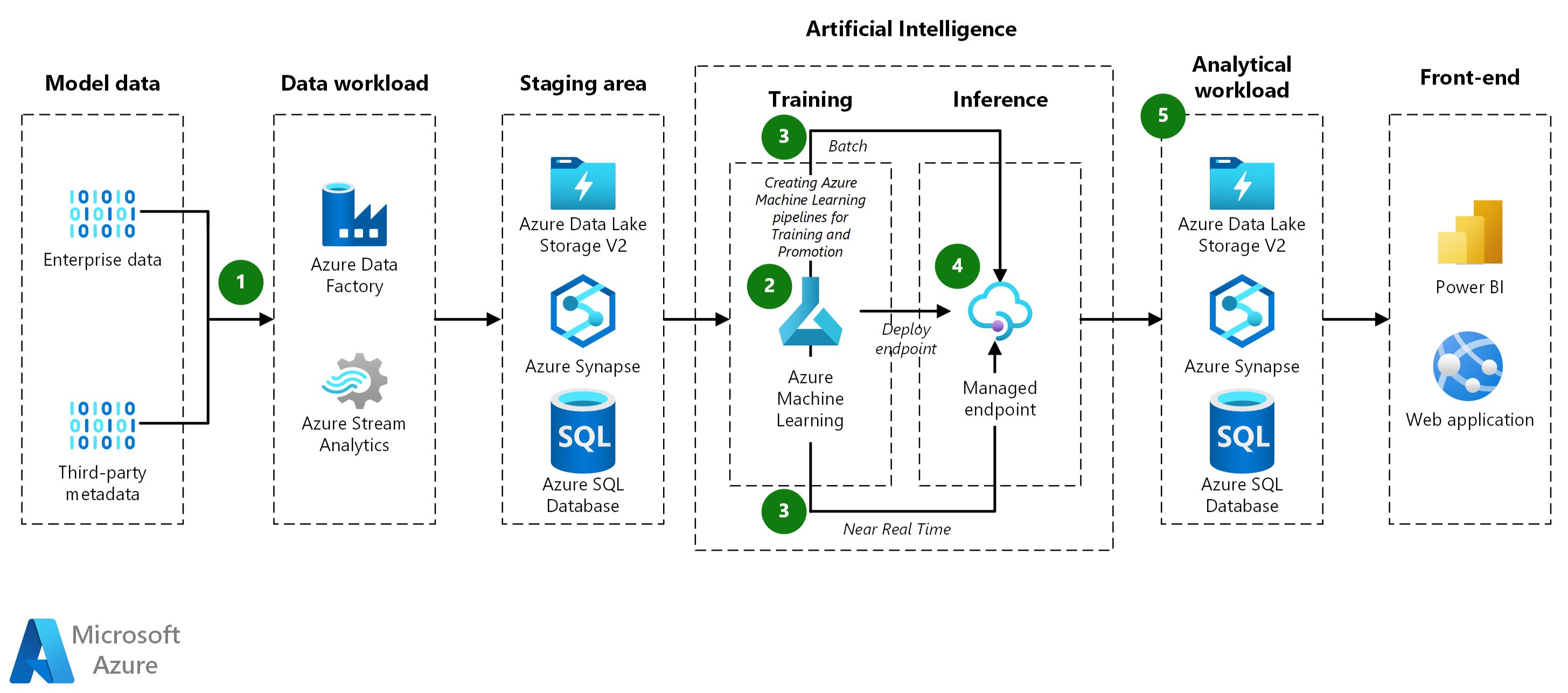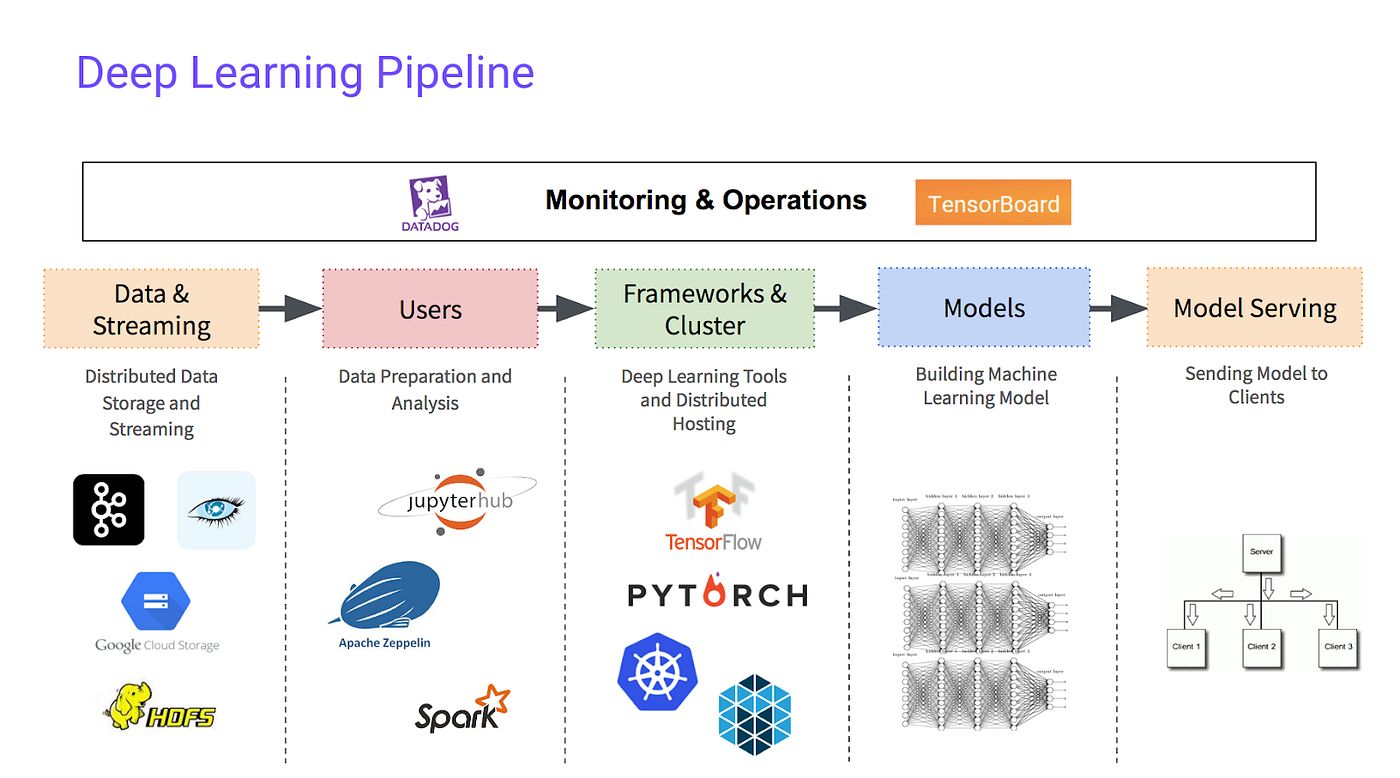Introduction
Machine learning has become a prominent field in the world of technology and data science, revolutionizing the way we approach complex problems and analyze vast amounts of data. With the advancements in computing power and the availability of large datasets, machine learning has gained immense popularity and is being utilized in various industries.
So, what exactly is machine learning? In simple terms, it is a subset of artificial intelligence (AI) that focuses on enabling computers to learn and make predictions or decisions without being explicitly programmed. By utilizing algorithms and statistical models, machine learning systems can analyze data, identify patterns, and improve their performance over time through experience.
The use of machine learning offers a wide range of benefits in various domains. Businesses can leverage machine learning to gain valuable insights from their data, make better decisions, and optimize processes. In the healthcare industry, machine learning can aid in disease detection, drug discovery, and personalized treatment plans. Furthermore, machine learning algorithms can enhance fraud detection, improve customer experience, and enable autonomous vehicles, among many other applications.
Understanding how machine learning works is crucial to grasp its potential and limitations. At its core, machine learning involves three main components: data, models, and algorithms. The process begins with collecting and preprocessing relevant data, which is then used to train a model. The model, equipped with an algorithm, makes predictions or decisions based on the input data. These predictions are evaluated and adjusted to improve the model’s accuracy, which is an iterative process that continually refines the model over time.
In the real world, machine learning finds applications in various industries. For instance, in the financial sector, machine learning algorithms are used for credit scoring, fraud detection, and algorithmic trading. In the e-commerce industry, personalized recommendations and chatbots utilize machine learning to enhance the customer experience. Machine learning is even employed in virtual assistants like Siri and Alexa, enabling natural language understanding and speech recognition capabilities.
While machine learning has brought significant advancements, it also poses challenges and limitations. One such challenge is the requirement for large and high-quality datasets to train the models effectively. Additionally, the complexity of the algorithms and their interpretability can be a hindrance in understanding the decision-making process of machine learning systems. Privacy concerns, biases in the data, and ethical considerations are also important factors that need to be addressed when deploying machine learning solutions.
In this article, we will delve deeper into the world of machine learning, exploring its benefits, working principles, real-world applications, challenges, and ethical considerations. By understanding these aspects, we can uncover the immense potential of machine learning and its impact on various industries, paving the way for a data-driven future.
Understanding Machine Learning
Machine learning is a subset of artificial intelligence (AI) that focuses on enabling computers to learn and make predictions or decisions without being explicitly programmed. It is based on the idea that machines can learn from data, identify patterns, and make informed decisions or predictions. By using algorithms and statistical models, machine learning systems can process data and improve their performance over time.
There are various types of machine learning, including supervised learning, unsupervised learning, and reinforcement learning. Supervised learning involves training a machine learning model with labeled data, where the input and corresponding output are provided. The model learns to make predictions based on the known output values. Unsupervised learning, on the other hand, deals with unlabeled data and focuses on finding patterns or relationships within the data. Reinforcement learning takes a different approach by using a reward-based system to train the model to make specific decisions by trial and error.
The key concept in machine learning is the use of algorithms to process and analyze data. These algorithms can be classified into different categories, such as decision trees, support vector machines, neural networks, and clustering algorithms. Each algorithm has its own strengths and weaknesses, and the choice of algorithm depends on the specific problem and dataset at hand.
In order to effectively train a machine learning model, a large and diverse dataset is required. The quality and quantity of the data play a crucial role in the performance of the model. The data is usually split into training data, used to train the model, and testing data, used to evaluate the model’s performance. Cross-validation techniques can also be employed to assess the model’s performance and prevent overfitting.
Once the model is trained, it can be used to make predictions or decisions on new, unseen data. The model’s performance can be evaluated by comparing the predictions with the actual outcomes. If the model is not performing well, adjustments can be made by tweaking the algorithm or refining the dataset.
It is important to note that machine learning models are not infallible. They can be influenced by biases in the training data, leading to biased predictions or decisions. Therefore, continuous monitoring and evaluation of the model’s performance are necessary to ensure its effectiveness and fairness.
Overall, understanding the basics of machine learning is crucial to harness its potential in various domains. By utilizing algorithms and statistical models, machine learning can automate complex tasks, detect patterns, and make accurate predictions. With advancements in technology and increasing availability of data, machine learning is poised to revolutionize industries and reshape the way we solve problems.
Benefits of Machine Learning
Machine learning offers a wide range of benefits across different industries and domains. By leveraging the power of algorithms and data analysis, machine learning enables businesses and organizations to make informed decisions, improve processes, and gain valuable insights. Here are some key benefits of machine learning:
- Improved Decision Making: Machine learning algorithms can analyze large volumes of data, identify patterns, and make accurate predictions or decisions. This helps businesses in making data-driven decisions, optimizing processes, and improving overall efficiency.
- Enhanced Efficiency and Automation: Machine learning can automate repetitive and time-consuming tasks, freeing up human resources for more complex and creative tasks. This leads to increased productivity, reduced costs, and improved operational efficiency.
- Predictive Analytics: With machine learning, organizations can predict future outcomes and trends based on historical data. This enables proactive decision making and the ability to anticipate customer needs and preferences.
- Personalized Experiences: Machine learning algorithms can analyze user behavior, preferences, and historical data to deliver personalized recommendations and experiences. This is particularly valuable in e-commerce, entertainment, and marketing industries, where personalized content and recommendations can improve customer satisfaction and drive engagement.
- Improved Customer Service: Machine learning-powered chatbots and virtual assistants can provide instant and accurate responses to customer queries, improving the customer service experience. These chatbots can understand natural language and context, leading to more meaningful interactions.
- Enhanced Fraud Detection: Machine learning algorithms can analyze patterns and anomalies in data to detect fraudulent activities in real-time. This is especially beneficial in the finance and banking industry, where timely detection of fraudulent transactions can save businesses significant losses.
- Medical Diagnosis and Treatment: Machine learning algorithms can assist healthcare professionals in diagnosing diseases, predicting patient outcomes, and designing personalized treatment plans. This can lead to faster and more accurate diagnoses, improved patient care, and potentially life-saving interventions.
These are just a few examples of how machine learning can benefit businesses and organizations. With the ability to process vast amounts of data and identify complex patterns, machine learning has the potential to revolutionize industries and drive innovation. However, it is important to approach machine learning implementation carefully, considering ethical considerations and ensuring the reliability and transparency of the algorithms used.
How Machine Learning Works
Machine learning is based on the idea of enabling computers to learn from data and improve their performance over time. It involves three main components: data, models, and algorithms. Understanding how these components work together is essential to comprehend the functioning of machine learning.
The first component, data, plays a crucial role in machine learning. To train a machine learning model, a large amount of data is needed. This data should be diverse and representative of the problem at hand. It is important to collect, clean, and preprocess the data before using it to train the model.
The second component is the model, which is the core of the machine learning system. The model is trained using the labeled or unlabeled data, depending on the type of learning algorithm used. The goal of training the model is to make it learn patterns and relationships within the data, so it can make accurate predictions or decisions on new, unseen data.
The third component is the algorithm, which determines how the model learns from the data. There are various types of machine learning algorithms, including decision trees, support vector machines, neural networks, and clustering algorithms. The choice of algorithm depends on the nature of the problem and the available data. Each algorithm has its own strengths and weaknesses, and selecting the appropriate one is crucial for achieving satisfactory results.
The process of machine learning involves the following steps:
- Data Collection: Collecting relevant and representative data is the first step in machine learning. This can involve manual data collection or sourcing data from various databases or APIs.
- Data Preprocessing: Before training the model, the collected data needs to be cleaned, transformed, and normalized. This includes handling missing values, removing outliers, and encoding categorical variables.
- Model Training: Once the data is prepared, it is used to train the model. The data is split into training data and testing data. The model learns from the training data and makes predictions on the testing data.
- Evaluation: The performance of the trained model is evaluated using various metrics such as accuracy, precision, recall, and F1 score. This evaluation helps determine the effectiveness of the model and identify areas that need improvement.
- Model Optimization: If the model’s performance is not satisfactory, adjustments can be made by refining the algorithm, tuning hyperparameters, or increasing the size or quality of the training data. This iterative process is crucial for improving the accuracy and reliability of the model.
- Prediction and Deployment: Once the model is trained and optimized, it can be used to make predictions or decisions on new, unseen data. The model can be integrated into existing systems or deployed as a standalone application, depending on the specific use case.
It is important to note that machine learning models are not infallible and can be influenced by biases in the training data. Continuous monitoring and evaluation of the model’s performance are necessary to ensure its accuracy and fairness.
Understanding the working principles of machine learning is essential to effectively utilize its potential in various domains. By leveraging data, models, and algorithms, machine learning enables computers to learn patterns, make predictions, and automate complex tasks, leading to improved efficiency and decision-making.
Real-World Applications of Machine Learning
Machine learning has found numerous applications across various industries, revolutionizing the way businesses operate and improving the lives of individuals. From healthcare to finance, transportation to marketing, machine learning is transforming industries and driving innovation. Here are some notable real-world applications of machine learning:
- Healthcare: Machine learning algorithms are being used to assist in medical diagnosis, predict patient outcomes, and aid in personalized treatment plans. They can analyze large amounts of medical data, including patient records, lab results, and genetic information, to identify patterns and provide insights to healthcare professionals.
- E-commerce: Machine learning algorithms are utilized in recommendation systems, helping online retailers provide personalized product recommendations to customers. These algorithms analyze customer behavior, purchase history, and browsing patterns to suggest relevant products, leading to higher customer satisfaction and increased sales.
- Finance: Machine learning is employed in fraud detection applications, enabling financial institutions to identify and prevent fraudulent activities in real-time. It can detect unusual patterns, spot anomalies, and evaluate the risk associated with transactions, protecting businesses and customers from financial loss.
- Transportation: Machine learning is crucial in the development of autonomous vehicles, enabling them to perceive their surroundings and make real-time decisions to ensure safe and efficient navigation. It also plays a role in optimizing logistics and route planning, reducing fuel consumption, and improving overall transportation efficiency.
- Marketing: Machine learning algorithms are used to analyze consumer data and behavior, enabling marketers to target specific customer segments with personalized advertisements. These algorithms can predict customer preferences, optimize marketing campaigns, and increase the effectiveness of customer acquisition and retention strategies.
- Cybersecurity: Machine learning techniques are employed in cybersecurity applications to detect and respond to cyber threats. These algorithms can analyze network traffic, detect anomalies, and identify suspicious activities, providing early warning signs and proactive measures to mitigate potential risks.
- Natural Language Processing: Machine learning models are used extensively in natural language processing applications, enabling computers to understand and interact with human language. Virtual assistants like Siri and Alexa utilize machine learning to comprehend and respond to spoken commands, providing users with a seamless and intuitive experience.
- Social Media: Machine learning algorithms power social media platforms, enabling personalized content recommendations, sentiment analysis, and targeted advertising. These algorithms understand user behavior, preferences, and social connections, facilitating a more engaging and relevant user experience.
These are just a few examples of the diverse and impactful applications of machine learning in the real world. As technology continues to advance, the potential for machine learning to revolutionize industries and improve lives is boundless. However, it is important to address ethical considerations and ensure responsible and transparent use of machine learning algorithms for the benefit of society.
Improving Accuracy and Efficiency with Machine Learning
Machine learning has the potential to greatly enhance accuracy and efficiency in various domains, benefiting businesses, organizations, and individuals. By leveraging sophisticated algorithms and analyzing vast amounts of data, machine learning enables improvements in decision-making, process optimization, and resource allocation. Here are some key ways in which machine learning improves accuracy and efficiency:
- Data Analysis and Insights: Machine learning algorithms can analyze complex and large datasets, extracting valuable insights and patterns that may not be easily discernible to humans. This enables businesses to make data-driven decisions, identify trends, and optimize processes based on factual evidence.
- Prediction and Forecasting: Machine learning models can make accurate predictions and forecasts based on historical data, enabling businesses to anticipate future trends, demands, and potential outcomes. This provides a competitive advantage by enabling proactive decision-making and resource planning.
- Automation of Repetitive Tasks: Machine learning can automate repetitive and mundane tasks, freeing up valuable human resources for more complex and creative work. This not only improves efficiency but also reduces the likelihood of errors and increases productivity.
- Personalization: Machine learning algorithms can analyze user preferences, behavior, and historical data to provide personalized recommendations, suggestions, and experiences. This improves customer satisfaction, engagement, and retention, while also increasing conversion rates for businesses.
- Optimized Resource Allocation: Machine learning can optimize the allocation of resources by identifying patterns and trends, allowing for better resource planning and utilization. This applies to various domains, including inventory management, supply chain optimization, and workforce allocation.
- Enhanced Customer Service: Machine learning-powered chatbots and virtual assistants can provide instant and accurate responses to customer queries, improving the overall customer service experience. These automated systems can handle a large volume of inquiries simultaneously, reducing customer wait times and increasing customer satisfaction.
- Fraud Detection and Security: Machine learning algorithms can analyze vast amounts of data to detect patterns and anomalies that may indicate fraudulent activities. This is particularly useful in finance, banking, and cybersecurity, where the timely identification of suspicious behavior is crucial for mitigating risks and protecting assets.
- Continuous Learning and Improvement: Machine learning models can self-improve over time through continuous learning. By analyzing feedback, monitoring performance, and adapting to changing environments, machine learning systems can continually refine their accuracy and efficiency.
By harnessing the power of machine learning, businesses and organizations can achieve higher levels of accuracy, optimize processes, and unlock new opportunities for growth. It is important to approach the implementation of machine learning systems with careful planning, proper data management, and ongoing evaluation to ensure maximum benefits and minimize potential pitfalls.
Challenges and Limitations of Machine Learning
While machine learning holds great promise in revolutionizing industries and enabling data-driven decision-making, there are several challenges and limitations that need to be addressed. Understanding these factors is essential to ensure the responsible and effective use of machine learning technology. Here are some key challenges and limitations of machine learning:
- Quality and Availability of Data: Machine learning models heavily rely on large, diverse, and high-quality datasets for training and validation. However, obtaining such data can be challenging, particularly in industries where data is scarce or difficult to obtain. Inaccurate or biased data can lead to skewed predictions and inaccurate model performance.
- Interpretability and Explainability: Machine learning models, particularly complex ones like deep neural networks, can be difficult to interpret and explain. This lack of transparency can raise concerns regarding the decision-making process of the model, especially in critical applications like healthcare and law enforcement.
- Overfitting and Generalization: Overfitting occurs when a machine learning model performs well on the training data but fails to generalize to new, unseen data. It is a common challenge in machine learning, and it can lead to poor model performance and inaccurate predictions. Proper regularization techniques and validation strategies are necessary to mitigate this issue.
- Ethical Considerations and Bias: Machine learning models can inadvertently perpetuate biases present in the training data. Biased data can lead to biased predictions, reinforcing societal inequalities. It is important to carefully curate and preprocess the data to minimize biases and adopt ethical practices to ensure fairness and inclusivity in machine learning applications.
- Data Privacy and Security: Machine learning relies on large amounts of data, raising concerns about privacy and security. Organizations need to ensure that sensitive information is protected and comply with regulations governing data privacy to maintain the trust of users and stakeholders.
- Computational Complexity and Resource Requirements: Training complex machine learning models can require substantial computational power and resources. This can be a limitation for organizations with limited infrastructure or budget constraints. Efficient algorithms and optimization techniques can help mitigate these challenges.
- Human-Machine Interaction: Integrating machine learning systems into existing processes and workflows can pose challenges in terms of usability and user acceptance. The ability to effectively interact and collaborate with machine learning systems will be crucial for their successful adoption and integration.
- Continuous Learning and Adaptation: While machine learning models can adapt and improve over time, they require continuous monitoring and updating to remain accurate and effective. This ongoing maintenance and retraining can be resource-intensive and time-consuming.
Addressing these challenges and limitations requires a holistic approach that includes data governance, algorithmic transparency, ethical guidelines, and regulatory frameworks. By recognizing and carefully managing these factors, we can harness the potential of machine learning technology while mitigating risks and ensuring its responsible and beneficial use.
Ethical Considerations in Machine Learning
As machine learning becomes increasingly integrated into our lives, it is essential to address the ethical considerations associated with its use. Machine learning algorithms have the potential to impact individuals, communities, and society as a whole. Ethical concerns arise in various aspects of machine learning, including data privacy, fairness, transparency, and accountability. Here are some key ethical considerations in machine learning:
- Data Privacy: Machine learning requires extensive amounts of data, often including personal and sensitive information. Organizations must handle this data responsibly, ensuring that it is collected and stored securely, and that individuals’ privacy rights are respected. Transparent data handling practices, informed consent, and data anonymization techniques should be employed to protect privacy.
- Fairness and Bias: Machine learning algorithms can inadvertently perpetuate biases present in the training data, leading to unfair outcomes or discrimination. It is crucial to carefully curate and preprocess the data to minimize biases. Regular monitoring and auditing of models can help detect and mitigate potential biases and ensure fairness in decision-making processes.
- Transparency and Explainability: The lack of transparency in machine learning models can be a significant concern. Users and stakeholders should have an understanding of how the models make predictions or decisions. Efforts should be made to develop interpretable and explainable machine learning algorithms to build trust and ensure accountability.
- Human Oversight and Control: Machine learning should be designed to complement human decision-making rather than replace it entirely. Maintaining human control and oversight is essential to prevent the misuse of technology and ensure responsible decision-making.
- Accountability: Organizations utilizing machine learning need to be accountable for the outcomes of their algorithms. They should be transparent about how the technology is used, take responsibility for any negative impacts, and establish mechanisms for addressing concerns or grievances arising from algorithmic decisions.
- Continual Monitoring and Evaluation: Machine learning models should be continually monitored to identify any unintended consequences or biases. Regular evaluations should be conducted to ensure that the models remain accurate, fair, and aligned with ethical principles. Feedback mechanisms should be established to allow users and affected parties to provide input and voice concerns.
- Ethics in Data Collection and Usage: Organizations should consider ethical implications when collecting and using data for machine learning. This includes obtaining informed consent, using data only for the intended purpose, and ensuring that the data is obtained in a legal and ethical manner.
- Global and Cultural Sensitivity: Machine learning algorithms should be mindful of cultural and societal differences, respecting diverse perspectives and values. Taking into account cultural context and ensuring inclusivity in algorithm development and deployment is crucial to avoid perpetuating biases or causing harm.
Addressing these ethical considerations requires collaboration between technologists, policymakers, and stakeholders. Establishing guidelines, standards, and regulations that govern the responsible development and use of machine learning technology is essential. Striking a balance between innovation and ethical practices is paramount to ensure that machine learning technologies contribute positively to society while minimizing potential harm.
Conclusion
Machine learning has emerged as a transformative technology with immense potential to revolutionize industries and improve our daily lives. With the ability to analyze vast amounts of data, identify patterns, and make accurate predictions, machine learning is enabling businesses to make data-driven decisions, optimize processes, and enhance customer experiences. From healthcare to finance, transportation to marketing, machine learning is being leveraged across diverse domains, delivering tangible benefits and driving innovation.
However, as with any powerful technology, machine learning comes with challenges and ethical considerations that need to be addressed. Issues such as data privacy, fairness, transparency, and accountability must be carefully managed to ensure responsible and ethical use of machine learning algorithms. Organizations must prioritize data protection, address biases in data and algorithms, and ensure human oversight and control to prevent unintended consequences or discrimination.
Despite these challenges, machine learning holds tremendous promise for the future. With continued advancements in technology, machine learning algorithms will become more sophisticated, accurate, and interpretable. The ethical considerations will also become more prominent, leading to the development of best practices and regulations to guide the ethical use of machine learning.
As we move forward, it is crucial to foster interdisciplinary collaboration between technologists, policymakers, ethicists, and stakeholders to shape the future of machine learning in a responsible and ethical manner. This collaboration will enable us to harness the power of machine learning while upholding the principles of privacy, fairness, transparency, and accountability.
In conclusion, the potential of machine learning to transform industries and drive innovation is undeniable. By addressing the ethical considerations and challenges associated with this technology, we can harness its power responsibly, shaping a future where machine learning enhances our lives while respecting our values and societal well-being.

























